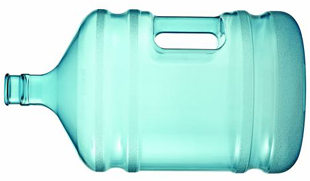|
While the southern tip of
Africa essentially enjoyed a Mediterranean climate, the weather patterns in
other locations within the same area were vastly different. The northeastern
region underwent repeated annual cycles of drought and flood, but the innovative
use of irrigation, along with private dams on private property, allowed European
settlers to practice agriculture. During the early years of British and European
expansion across much of the United States, South America and Australia,
settlers used the same methods to sustain agriculture.
In one region in
Australia, the territorial government outlawed private dams on private property
and built its own large mega dams. During severe drought, however, the high rate
of evaporation and seepage from the mega dams literally exposed the dry dam
floors. By comparison, evaporation from covered private dams on private property
was minimal, as was seepage that anyway could be put to productive use to
sustain some form of agricultural production.
|
Changing Weather Patterns |
 Much of the world has in
recent years experienced some type of change in local weather patterns.
Historically, not all societies and nations coped well with changing weather
patterns. Despite their incredible technical prowess, the Maya and Inca in many
locations across South and Central America were forced to migrate in response to
sudden changes in weather patterns. In modern times, governments have also
proven to be inept at managing changing climate. Much of the world has in
recent years experienced some type of change in local weather patterns.
Historically, not all societies and nations coped well with changing weather
patterns. Despite their incredible technical prowess, the Maya and Inca in many
locations across South and Central America were forced to migrate in response to
sudden changes in weather patterns. In modern times, governments have also
proven to be inept at managing changing climate.
Throughout most of Africa,
large segments of the population still survive the way their ancestors survived.
The concept of communal property still predominates across much of the
continent. Private covered dams on private property are rare outside of regions
where Europeans had practiced agriculture. While a few state-built dams exist,
across much of Africa, most of the population still obtains water from rivers,
streams and groundwater.
State-built mega dams in
hot climates are subject to high rates of evaporation and seepage. To protect
the water, most governments forbid any kind of residential or agricultural
development near the dam wall, where seepage would be greatest. The result is
that seepage water often evaporates instead of being put to productive use.
Simultaneously, germ- and disease-infected birds may have easy access to the
water in the dam.
The Southwestern United
States currently faces a water shortage at a time when farmers receive
subsidized water. Instead of providing water to their plants using underground
water distribution, they spray water through the air or distribute water through
above ground channels. Both methods involve water loss through evaporation. But
the subsidized water program is regarded as politically sacred and therefore
untouchable.
|

